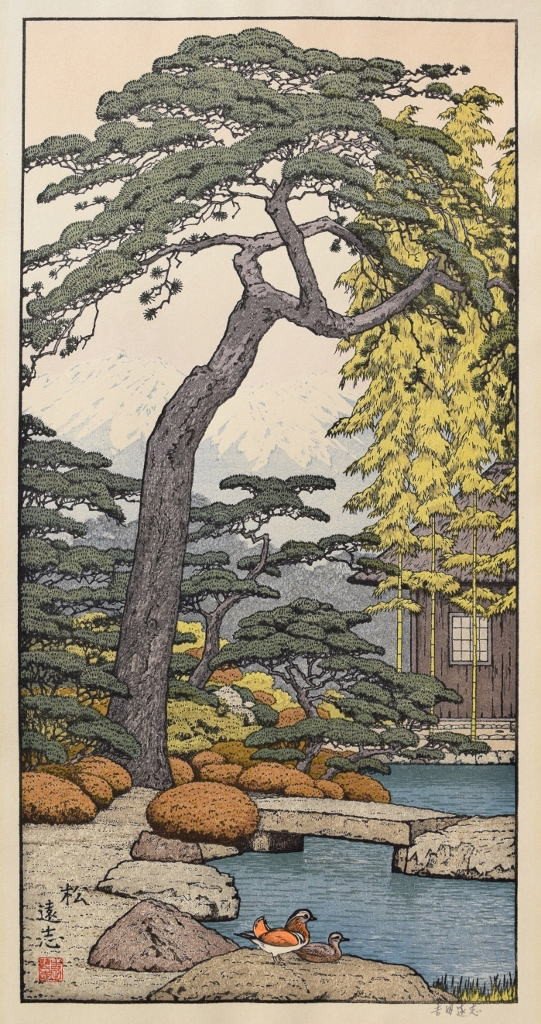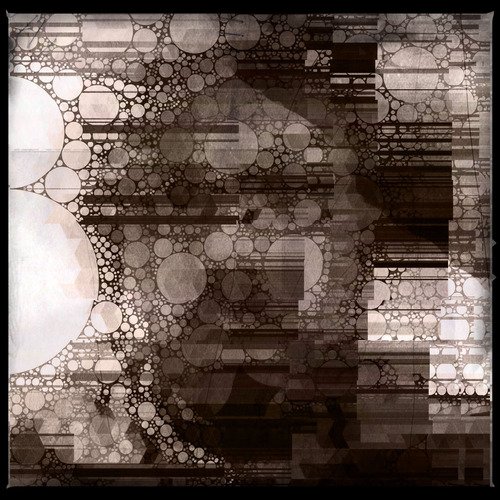Temple Pine Needles :: Haiku of Japan #38
禅寺の松の落葉や神無月
zendera ni matsu no ochiba ya kannazuki
at the zen temple
pine needles falling
month of no gods
—Boncho
(Tr. David LaSpina)

(Print by Toshi Yoshida)
Nozawa Boncho was one of Basho's leading students, and often performed renku with him. He was also a successful doctor.
In the old Japan calendar, the 10th month (神無月 kannazuki) was known as the month of no gods in most of the country. At this time, all the gods in all the shrines all over Japan travel to Izumo Shrine in modern day Shimane Prefecture where they met for their annual god meeting. There the month was called the month of gods (神在月 kamiarizuki).
You may be tempted to read into the presence of the word zen here. Zen Buddhists famously have no patience with any supernatural hocus-pocus, and this is the month without gods. Is Boncho making some kind of religious comment here? Possibly. Like his mentor and teacher, Boncho likely studied Zen or at least would have been highly influenced by it due to Basho. But probably not. Kannazuki was just the name of the month, that's all, and he was likely just using it simply to refer to the month in the same way that we might say thursday simply to refer to the day without intending any comment about Thor.
Don't miss other great haiku in the Haiku of Japan series!
#1–10 — Haiku of Japan :: Collection #1
#11–20 — Haiku of Japan :: Collection #2
#21–30 — Haiku of Japan :: Collection #3
#31 — Am I a Butterfly or a Man?
#32 — Hidden Grey Hair
#33 — Sleeping Butterfly
#34 — Never To Grow Old
#35 — From Dog to Cat
#36 — Short Night
#37 — Silent Moon
If you enjoyed this post, please like and resteem. Also be sure to follow me to see more from Japan everyday.
I post one photo everyday, as well as a haiku and as time allows, videos, more Japanese history, and so on. Let me know if there is anything about Japan you would like to know more about or would like to see.
 | David LaSpina is an American photographer lost in Japan, trying to capture the beauty of this country one photo at a time. |
Amazing! I love exploring Japanese culture, thanks for sharing this David. Just followed you now :D
Glad you enjoyed it, and thanks for the follow :) I post one of these just about every day, so stay tuned for more.
It's amazing how a simple haiku can be so evocative. Having lived in rural Miyazaki for two years, this brought back a flood of memories. Appreciate your sharing this and I look forward to seeing more from you. Natsukashii!
Happy to hear it brought you back to Japan, so to speak :) Rural Miyazaki—that must have been an adventure! I try to post one of these translations every day, so stay tuned for more.
An adventure it was indeed. I was a JET from 2009-2011. Time of my life :-D Reading the Japanese it took me a minute to find the 5 / 7 / 5 syllable pattern and thought the haiku was missing a syllable or two. Missed the separate n in both zendera and kannazuki.
ze n de ra ni
ma tsu no o chi ba ya
ka n na zu ki
Right? Sorry, way too much time on my hands. Sunday here in Hawaii ;)
Yep, you found it. I do occasionally post some free-form haiku tho. Santoka rarely followed the typical hokku pattern (such as in this one) but I usually mention if they are free-form or otherwise miss the count (as even Basho sometimes did).
That sounds wonderful. I never did the ALT thing, but I have many friends who did and it always sounds like it can be a wild ride. You should post some of your memories from it on here sometime. I'd love to read them.
Really nice writing. It's awesome that you can express so much in so few words...to me, this is very vivid.
Thank you for visiting :) I agree. Haiku can express so much in so little. That is why I love them so much.